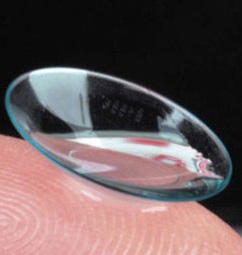Med-dispensing contact lens tested
 Almost no-one likes putting in eye drops, and studies have shown that a number of factors make them a fairly ineffective way to dispense medicine – now a new device may end the age of ocular inconvenience and injury for many.
Almost no-one likes putting in eye drops, and studies have shown that a number of factors make them a fairly ineffective way to dispense medicine – now a new device may end the age of ocular inconvenience and injury for many.
Harvard Medical School researchers are working on a contact lens that can deliver glaucoma medication to the eyeball continuously for weeks.
The drug-eluting contact lens is designed for prolonged delivery of 'latanoprost', a common drug used for the treatment of glaucoma, the leading cause of irreversible blindness worldwide.
“In general, eye drops are an inefficient method of drug delivery that has notoriously poor patient adherence. This contact lens design can potentially be used as a treatment for glaucoma and as a platform for other ocular drug delivery applications,” said Dr Joseph Ciolino, an ear and eye specialist and lead author of a new paper on the design.
“The lens we have developed is capable of delivering large amounts of drug at substantially constant rates over weeks to months,” said researcher Dr Daniel Kohane.
The latanoprost-delivering contact lenses were created by embedding latanoprost-polymer films in commonly used contact lens hydrogel.
In early tests the lenses delivered an equal amount of medication over several weeks, compared to the traditional daily topical method
The lenses appeared safe in cell culture and animal studies, and they can be made with or without the ability to correct vision for people with near-sighted or far-sighted eyes.
“A non-invasive method of sustained ocular drug delivery could help patients adhere to the therapy necessary to maintain vision in diseases like glaucoma, saving millions from preventable blindness,” Dr. Ciolino said.
Tests are ongoing; a preliminary report is accessible here.








 Print
Print